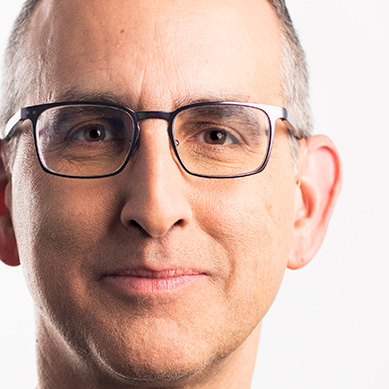
Introducing a new series, The Mind at Work, based on conversations with leading thinkers on the brain and other brain-like things.
In March, 2019, the World Health Organization added burnout to its list of diagnoses. Sleeplessness, loneliness, depression, and substance abuse are having a major negative impact on the global workforce at a time when automation is changing the meaning of work itself.
What’s happened to work, and what’s happening to our minds at work? Are we in the middle of a cognitive crisis or just lagging behind the latest cycle in the long arc of technological evolution that began when our ancestors started cooking with fire? Will our brains naturally adapt to the always-on information overload of the digital world, or do we need to actively change our minds?
The Mind at Work is a series of interviews with people whose research informs these questions. We’ll be speaking with leading experts from neuroscience, psychology, and artificial intelligence as well as writers, cooks, artists, and innovators. What’s at stake is how we feel at work, now that digitally mediated activities have expanded to fill almost all our waking hours.
If the idea of the endless workday seems exaggerated, consider the “shadow work” of your personal life. Whether it’s creating content for social media, online shopping, or filling out bureaucratic forms, our leisure time has also been consumed by workflows and digital communication. Even raising our children and managing our relationships have become forms of unpaid screen-mediated labor.
So what happens when our brains are working all the time? From a neurological perspective, this is the wrong question, because our brains are in fact always on. With rare exceptions, once they turn off, they die. No cogito, no sum, ergo dead.
Because the brain is always on, it has evolved over millions of years and countless species to conserve energy.
Because the brain is always on, it has evolved over millions of years and countless species to conserve energy. This is the observation behind the free energy principle, discovered by neuroscientist Karl Friston of University College London. All brain activity, Friston claims, can be explained as a form of reducing uncertainty about the world—because that conserves energy. There’s much more to it, as we shall hear in our interview with him, but the central point where work is concerned is to look for the tradeoffs in what we pay attention to when we’re overwhelmed by the digital world (i.e., always).
Paying attention is a loaded term. We tell children to pay attention in school, and our attentiveness to them at home can be as cognitively demanding as any profession. To understand how we learn and adapt to new things, children are in fact our best model, suggests Berkeley psychologist Alison Gopnik. Her recent book, The Gardener and the Carpenter, details what she’s learned in a career of studying how children learn. The goal-oriented style of contemporary parenting, Gopnik claims, is a direct response to the breakdown of the caring communities that have nurtured our young for as long as there have been humans.
Burnout, which is both a medical and figurative epidemic in the age of smartphones and always on work, is characterized by an inability to care. If caring makes us human, how do we keep our careless inattention from draining our humanity? Perhaps, to follow the advice of chef and author of Salt, Fat, Acid, Heat, Samin Nosrat, we need to relearn what we like. Cooking is one of the oldest and most satisfying forms of labor. Not only do we feed our family and friends, we make community with them through food. If the four elements of flavor in Nosrat’s book help us learn to make food delicious, what might the corresponding elements be to make work itself satisfying and meaningful?
Focus is sure to be on that list, but again, our digital habits are getting in our way. Neuroscientist Daniel Levitin of McGill University, author of This Is Your Brain on Music and The Organized Mind, hits pause on the current symbol of concentration: headphones on at work. Music can energize us or calm us down, says Levitin, but cognitively demanding work is best done with sound off, so this is both a social and a technological problem. But music, like cooking, is also a potent source of metaphors for how we process the world—and how we work together.
Humans are curious creatures, and also intensely social. The social aspects of work cause us the most pain, but also the most joy. Amy Edmondson of Harvard Business School studies how organizations adapt to the increasingly complex, interdependent, and uncertain conditions of post-modern work. Her concepts of teaming and psychological safety point to the central role of trust in the distributed cognition of effective organizations. In her work with health care teams and emergency responders, she’s documented how the communication of shared purpose and forward progress is often the difference between meaningful work and otherwise crushing workloads.
This is just the beginning of an ongoing series of conversations exploring the leading edge of thinking about what brains are and how we can apply that understanding to our work. As we confront the challenges of the 21st century, our individual and collective abilities to learn and adapt to an increasingly uncertain world are our greatest assets. Please join us for weekly installments of The Mind at Work, starting next week with Karl Friston.



